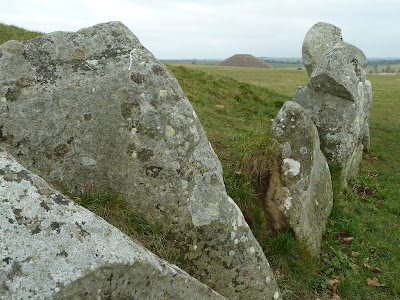 |
| The crow enjoys his nuts. |
This tame crow was busy pecking at nuts in a feeder as we wandered past and into a gift shop in Avebury. I met friends for lunch in "The Red Lion" supposedly haunted by a lady who fell down the well and drowned. I'd arrived late for lunch as the 49 bus had broken down in Devizes, and the driver had evacuated the doubledecker, as blue smoke wafted out from behind the front, nearside wheel. It smelt of burnt rubber, and the driver refused to continue the journey until the mechanics arrive to find the fault. After a late lunch and a much needed pint, we wandered around the village and shops, but bought nothing. The area was quiet, this world famous site is usually crowded in the spring and summer months with tourists from around the world, and usually the pub is so busy, that it's impossible to find a table.
Avebury stone circle was built by neolithic people over 2600 years ago, and this is the only place in the world where you will find a pub and a village inside a stone circle. Sir Alexander Kieller (of the famous marmalade family) excavated the site in early in 20th century, and re-erected many of the stones that form the largest stone circle in Europe. See more information on: www.wikipedia.org/wiki/Avebury
 |
| The 17th century threshing barn at Avebury is now a museum. |
This 17th century threshing barn is now a museum, and at present is displaying a interactive exhibition about five species of bats. The neolithic artifacts found by Sir Alexander Kieller during his extensive excavations are displayed in the old farmyard buildings, which I have yet to visit. Keiller was also responsible for re-establishing much of the village outside the stones, and area now called "Avebury Trusloe." However the church and manor house, together with the farm buildings and of course the stones, now form the entire visitor complex.
 |
| Inside the threshing barn museum, the bats are in here somewhere! |
 |
| Snowdrops cover the grass with Avebury Manor in the background. |
In the background can be seen Avebury Manor, a fine 16th century house and recently the subject of a complete makeover, which was filmed for BBC television. Since all the publicity, the house has become a busy tourist destination, and is sometimes forced close because of visitor numbers. The snowdrops are lovely at the moment, obviously the cold snap encouraged them to grow, and it warms the heart to know that spring is just around the corner. (I hope)




















.JPG)

















